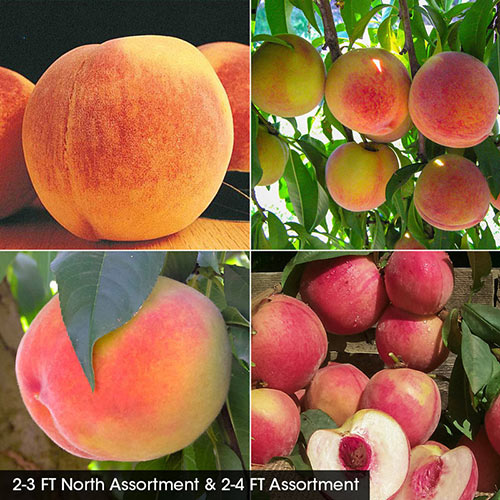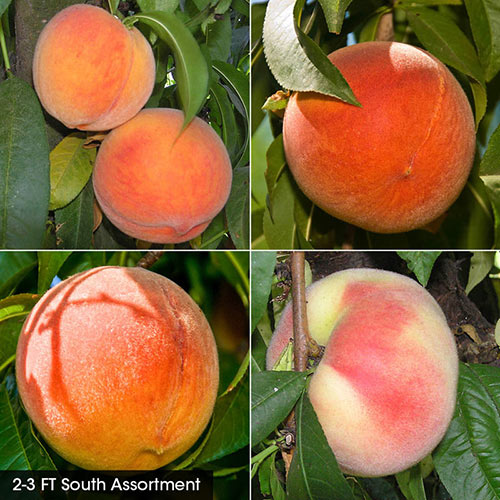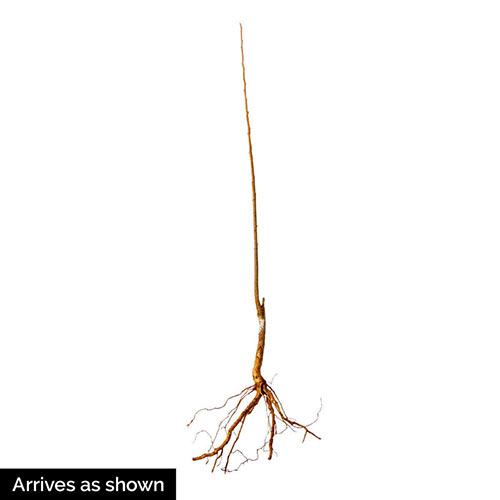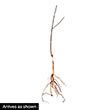Welcome to Gurneys! Free $25 off any order of $50 or more TODAY! Click hereX
Peach Fruit Tree Assortment
Peach Fruit Tree Assortment
The flavor and aroma of warm, tree ripened fruit will excite your taste buds and put a smile on your face! Fruit, picked fresh from your backyard, makes store-bought peaches pale by comparison. There is a large increase in the amount of sugars that a tree pushes into peaches in the last 10-14 days before peak ripeness. Obviously, peaches that you buy in your local grocery have to be picked before this last surge of sugars is generated. That's why fruit from your backyard has superior flavor. All peaches and nectarines are self-pollinating, so they do not require another variety to produce fruit. The best way to know if a variety is ripe is to taste it! A ripe peach should be slightly soft when squeezed and should be sweetly aromatic. There are two basic groups of peaches: clingstone and freestone varieties. On clingstone varieties the fruit adheres or "clings" to the pit when cut open. The flesh of clingstone fruits is usually more firm than freestone varieties, and retains its firmness when canned. Freestone varieties will "fall off" the pit when cut into, and will normally be softer than clingstone peaches, and have a slightly stringy texture when canned. If you plan to use most of your harvest for canning or cooking, freestone varieties are faster and easier to process. Many of the following varieties are not available in stores because they are not hard enough to withstand shipping. But sun-ripened peaches are far superior in flavor and juicy aroma. This varieties in this assortment are bareroot trees and are hardy in USDA zones 5 and up are shipped up to 1/4" caliper. White fleshed peaches are often neglected by commercial growers because the cream colored flesh show bruises very easily. Since you will be picking the peaches by hand out of your yard, you won't be bothered by this problem! White fleshed varieties are intensely flavored and very sweet. For fresh eating they are unsurpassed. Winter chill requirements are listed for each variety. The easiest way to find out what the average hours of winter chill you receive where you live is to check with your County Extension Service. You can also likely find with a Google search. Search for "USDA chill hours". If you don't get enough chill hours in your area, you may get inconsistent fruit set, some years may not have any fruit set.







 Gardens Alive! & Supplies
Gardens Alive! & Supplies










